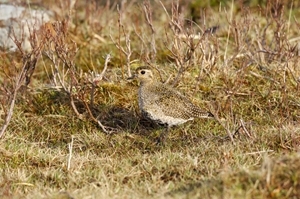 Ending grouse moor management risks declines and possible local extinctions of a range of ground-nesting bird species, a new study has revealed.
Ending grouse moor management risks declines and possible local extinctions of a range of ground-nesting bird species, a new study has revealed.
DOWNLOAD THE REPORT
The new research from the GWCT looks at the impact of stopping grouse management on wader species in the south west of Scotland.
Its conclusions are drawn from studies in two Special Protection Areas: Muirkirk & North Lowther Uplands and Langholm/Newcastleton Hills (which will shortly be the subject of a report from the Langholm Moor Demonstration Project). A Special Protection Area (SPA) is a designation under the EU Directive on the Conservation of Wild Birds. Under the Directive, member states have a duty to safeguard the habitats of migratory birds and certain particularly threatened bird species.
Among the key findings in the report are:
- Red grouse bags have declined, with 42% of 31 moors now no longer shooting red grouse.
- Increases in the numbers of hen harriers during the keepered phase of the Langholm Moor Demonstration Project contrasted with a collective decline in other SPAs in south west Scotland where there was almost no grouse keepering
- The numbers of black grouse attending leks declined by 80% during an approximate 15-year period from the early 1990s onwards. However, twice as many lekking males were found where gamekeepers were employed to provide driven grouse shooting.
- In Muirkirk & North Lowther Uplands, where keepering has sharply declined, an 84% drop in golden plover population, 88% drop in lapwing and 61% drop in curlew were recorded.
The research mirrors an equivalent study carried out in north Wales, which examined the end of grouse moor management within the Berwyn SPA. That research showed a local extinction of lapwing, 90% loss of golden plover and a 79% reduction in curlew between 1983-85 and 2002 (Warren & Baines 2014). Over the same period, substantial increases in carrion crows, ravens and buzzards were noted.
DOWNLOAD THE REPORT
Photo credit: Laurie Campbell